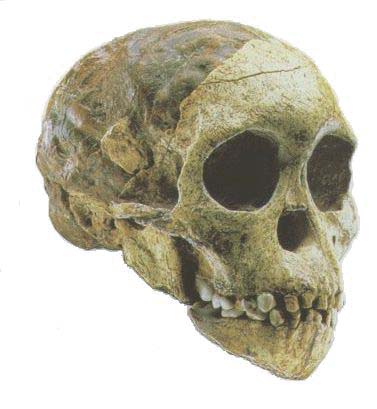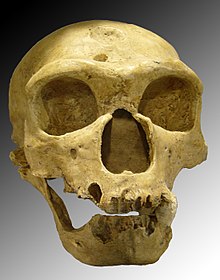Dracula Ant (Adetomyma venatrix)
Dracula Ants are different than any other ants. They are shaped unlike any other ant, having a skinny waist and only one joint between their thorax and abdomen. They get their name from the way they feed. Due to their skinny waist, they can't eat solid foods, or else they would choke and die. The larvae on the other hand, are made to eat and can handle all manner of food. They consume the solids that the workers bring back to the nest and pass the protein back as a liquid. The adult ants then chew a hole in the larvae skin. The hemolymph then oozes out, and the adults take a drink.
Dear Mom,
Life here is tough. It's horrible having to see my own kids get cut open just to feed the rest of our population. I wish evolution took a different path, and we didn't develop this way. Sometimes I feel like I should be helping the young ones. They haven't done anything to deserve it. Every day I see my own family get cut open just so that we can feed ourselves. I can't argue, it is good, but I wish there was another way to feed ourselves. Due to this continuous way of eating, our species is slowly diminishing. I fear that by the end of our day we will have about 10 less brothers.
I plan on trying to help out the family by rescuing as much as I can, it'll be dangerous but seeing my family safe matters more to me than dying. I will do everything I can to save them, and if I fail, I tried. Please don't let our family tree line be the same. If anything happens to me, I'll need you to help or at least try to help the rest of the family. It will mean the world to me. I love you mom, hope to see you soon.
Sincerely,
Alessandro Ettore (defender)
Biology
Thursday, April 26, 2012
Thursday, April 19, 2012
Thursday, April 12, 2012
Becoming Human
Sahelanthropus tchadensis
(6-7 millions years old)
Found in Central Africa, this hominid has a body structure similar to apes today.
Australopithecus africanus
(2-3 million years old)
Found in Makapansgat, South Africa, this hominid has a body structure more similar to our build. It is small-bodied and has a pelvic characteristic to habitual bipeds.
Paranthropus boisei
(2.3-1.4 million years old)
Found in East Africa, this hominid had features unique to themselves (usually large extremes of current structures), such as large cheekbones and large molars.
(2.5-1.6 million years old)
One of the earliest Homo species, found in Kenya, Africa, this hominid had an unusually large brain, not unlike the brain in our species. It had a combination of ape-like and human-like traits in their body.
(200 -28 thousand years old)
The skull of this hominid is very similar to our skulls, albeit its body structure is heavily built like some apes today.
Thursday, March 15, 2012
Geographical Distribution Supporting Evolution
 As common sense dictates, the fossils of ancestral species to a current species would be found near to where the current species lives.
As common sense dictates, the fossils of ancestral species to a current species would be found near to where the current species lives.This happens because when the animal is adapting into the current species, it also adapts to its environment, making it harder to leave the already set environment. Eventually, it evolves into what we have today, never leaving its original environment.
Thursday, February 23, 2012
Natural Selection and Exapatation
Natural Selection is the process in which mutations are either spread or eliminated is a crucial part of evolution. It is a process that usually takes many years, and even then, continues on. As the environment around the animal changes, so do the animals need to adapt. Useful adaptations help the animal survive to pass on their genes, including the adaptations, while hindering adaptations only prevent the animal from surviving and therefore from passing on their hindering gene. After multiple centuries, the helpful gene would have spread to most of the population of the animal while the hindering gene would have been snuffed out.
Exaptation, a close term of natural selection, is the charge of the function of a gene in a animal. An example would be the usage of feathers in a bird. Originally, for heat regulation, the feathers eventually became for the use of flying. Due to natural selection, many useful mutations grew into flight for the birds which have remained ever since.
Exaptation, a close term of natural selection, is the charge of the function of a gene in a animal. An example would be the usage of feathers in a bird. Originally, for heat regulation, the feathers eventually became for the use of flying. Due to natural selection, many useful mutations grew into flight for the birds which have remained ever since.
Thursday, February 16, 2012
Cloning
Cloning, the process of creating genetically identical organisms, is currently a very promising area. Many are researching cloning and its implications on human society.
However, cloning research should be regulated by some kind of enforcer. Without such regulation, cloning research could be dangerous and unethical. If research is not regulated, the scientific community would be the only decider on whether their research has gone too far ethically. They may choose to take drastic means in order to further their research without regards to how they are doing so.
The regulation should most likely be done by the government. Constant inspection by the government with the project to shut down any experiment that proves to be unethical would help bring cloning research in check. Ballets to determine whether the experiment should be shut down would bring the population's opinion on the research to the government.
Regulation can also be done by the benefactor of the experiment. The benefactor, in a sense, could regulate the experiment by withholding the money to support the experiment. However, the ethical question would depend solely on the benefactor. In this case, the government can step in which brings this back to the above paragraph.
However, cloning research should be regulated by some kind of enforcer. Without such regulation, cloning research could be dangerous and unethical. If research is not regulated, the scientific community would be the only decider on whether their research has gone too far ethically. They may choose to take drastic means in order to further their research without regards to how they are doing so.
The regulation should most likely be done by the government. Constant inspection by the government with the project to shut down any experiment that proves to be unethical would help bring cloning research in check. Ballets to determine whether the experiment should be shut down would bring the population's opinion on the research to the government.
Regulation can also be done by the benefactor of the experiment. The benefactor, in a sense, could regulate the experiment by withholding the money to support the experiment. However, the ethical question would depend solely on the benefactor. In this case, the government can step in which brings this back to the above paragraph.
Tuesday, February 7, 2012
Transcription, Translation, and Protein Synthesis
TRANSCRIPTION
Transcription is the process in which a synthesis of RNA is created from a DNA template. The entire process takes three steps. Initiation, Elongation, and Termination.
Initiation
Initiation is when the DNA helix splits into a single strand, and is then attached by the RNA polymerse. The RNA attaches to the sequence of DNA that contains the promoter, which details where the RNA is to start.
Elongation
Once properly connected to the DNA strand, the RNA begins to use the DNA strand as a template for copying the genetic material. It connects the DNA nucleotides to their appropriate, opposite nucleotides (genuine with cytosine and vice-versa).
Termination
RNA transcription stops when the newly synthesized RNA molecule forms a G-C-rich hairpin loop followed by a run of Us. When the hairpin forms, the mechanical stress breaks the weak rU-dA bonds, now filling the DNA-RNA hybrid. This pulls the poly-U transcript out of the active site of the RNA polymerase, in effect, terminating transcription.
TRANSLATION
 Translation is the process of assembling protein molecules from the information encoded in the RNA. It starts off when mRNA goes out of the nucleus and joins a group of ribosomes and together they align to form a pattern.
Translation is the process of assembling protein molecules from the information encoded in the RNA. It starts off when mRNA goes out of the nucleus and joins a group of ribosomes and together they align to form a pattern.
the tRNA in their respective amino acid go to these ribosomes. The tRNA bear their anticodons complementary to the codon of mRNA.
Transcription is the process in which a synthesis of RNA is created from a DNA template. The entire process takes three steps. Initiation, Elongation, and Termination.
Initiation
Initiation is when the DNA helix splits into a single strand, and is then attached by the RNA polymerse. The RNA attaches to the sequence of DNA that contains the promoter, which details where the RNA is to start.
Elongation
Once properly connected to the DNA strand, the RNA begins to use the DNA strand as a template for copying the genetic material. It connects the DNA nucleotides to their appropriate, opposite nucleotides (genuine with cytosine and vice-versa).
Termination
RNA transcription stops when the newly synthesized RNA molecule forms a G-C-rich hairpin loop followed by a run of Us. When the hairpin forms, the mechanical stress breaks the weak rU-dA bonds, now filling the DNA-RNA hybrid. This pulls the poly-U transcript out of the active site of the RNA polymerase, in effect, terminating transcription.
TRANSLATION
the tRNA in their respective amino acid go to these ribosomes. The tRNA bear their anticodons complementary to the codon of mRNA.
PROTEIN SYNTHESIS
Protein synthesis is the process in which individual cells create proteins. Both DNA and all types of RNA are involved in this process. Enzymes in the cells nucleus begin by unwinding the DNA helix. The RNA forms as a copy of one side of the DNA strand, and is sent to other areas of the cell to aid in the bringing together of different amino acids that form proteins. Protein synthesis is so called because proteins are "synthesized" through mechanical and chemical processes in the cell.
Once the strand of RNA has been made in the nucleus, it is called messenger RNA (mRNA). The mRNA exits the nucleus through tiny openings called nuclear pores, and moves into the larger area of the cell, known as the cytoplasm. Once it exits the nucleus, the mRNA is drawn toward a structure known as a ribosome, which serves as the cell's work station for protein synthesis. At this point, only one sub-unit of the ribosome is present.
Subscribe to:
Posts (Atom)










